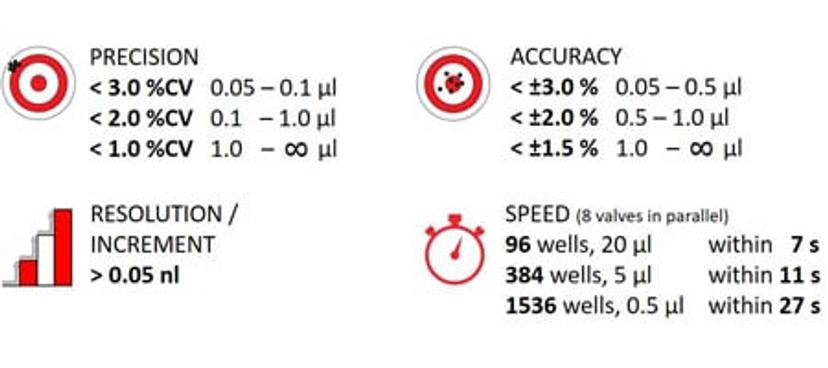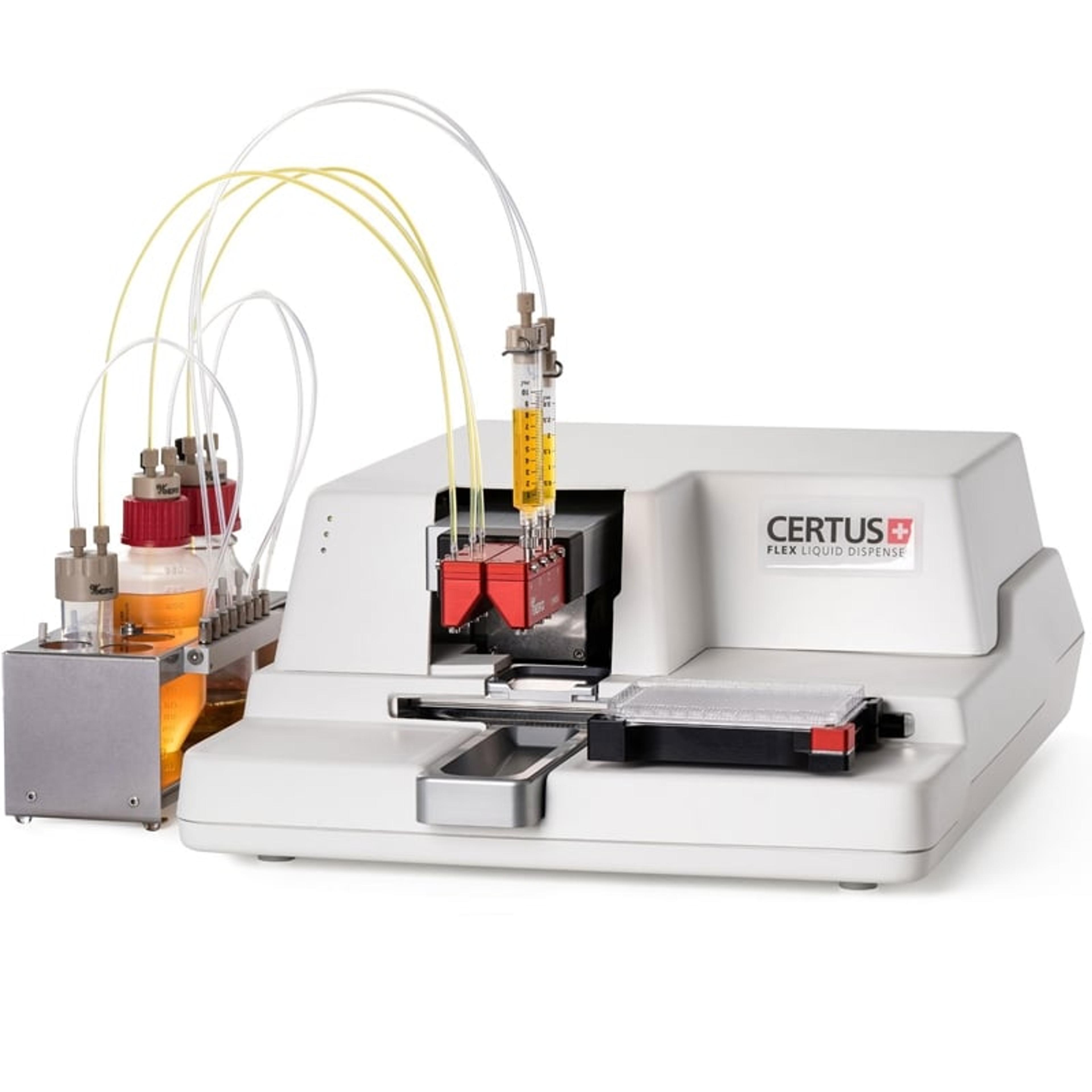Dispensing cells in nanoliter volumes onto Droplet Microarrays: dramatic reduction of material costs for cell screenings
In this guest editorial, Fritz Gyger AG shares how the revolutionary Droplet Microarray provides a solution to the limitations currently faced when using traditional microplates
26 Apr 2021

Cell screenings play a crucial role in drug discovery and also hold growing relevance in personalized medicine, yet current methods suffer from significant limitations related to expensive workflows.

High-throughput screening (HTS) is indispensable in biology and chemistry. Automated workflows with various equipment e.g. liquid handling devices, dispensers, incubators, variable read-out systems and automated data processing allow to perform a huge number of chemical, biological and pharmacological screenings. Most cell-based screenings are currently performed using common microtiter plates containing 96, 384 and 1536 wells. However, there is a limitation to use microtiter plates for large campaigns of 100,000 compounds a day or for screenings of scarce cells such as patient derived material, e.g. for personalized medicine and diagnostic testing, due to large volumes reflecting in high cell and reagent consumption.
Alexandra Matzke-Ogi is the head of Biology at Aquarray in Germany and coordinates the development of biological applications of Aquarray’s innovative assay platform. As a molecular and cellular biologist with experience as a leading scientist with focus on oncology research in biotech industry, she took on a challenge to miniaturize current screening processes while complying with the current ANSI/SLAS footprint industry standard.
“Our group developed the droplet microarray (DMA) platform based on the superhydrophobic–hydrophilic surfaces, which can be applied for high‐throughput screenings of live cells in 2D and 3D formats, including cytotoxicity screening, embryoid bodies screening, tumor spheroids screening, zebrafish embryo screening and many more.” Aquarray’s Droplet Microarray is a revolutionary miniaturized screening platform, which enables assays in volumes ranging from few nL to few µL depending on the array size. The Droplet Microarray is a transparent and completely planar array consisting of hydrophilic spots created on a superhydrophobic background. The array size is variable and ranges from 80-6048 spots per standard microscope glass slide. The extreme contrast between the wettable and non-wettable areas leads to spontaneous formation of arrays of homogeneous nanoliter‐sized droplets. The Droplet Microarray is compatible with experimental workflows and lab-automation standards and covers all areas of early stage drug discovery: combinatorial solid-phase and solution-based compound synthesis, high-sensitive characterization (e.g. by MALDI-TOF mass spectrometry or various types of spectroscopy), and high-content / high-throughput cell screening.
Optimizing miniaturization for cell screening
Precise loading of Droplet Microarrays with liquids is performed using a non-contact liquid dispenser. However, dispensing of cells on Droplet Microarray is most challenging as due to the miniaturized format the risk of evaporation is increased. The CERTUS FLEX with its contactless drop-on-demand dispensing technology by solenoid micro valves has turned out to be the perfect match for loading the Droplet Microarray as the array format can be set-up for customized patterns such as plates, slides and dishes. Precise printing of 100 cells in 150 nL on each spot was successfully conducted within a total dispensing time of only 52 seconds for 672 spots (spot size: 1x1 mm²) using one valve. This rapid dispensing process reduced the danger of evaporation to a minimum. After 20 hours the cells in the droplets were homogenously distributed in the spots and the cell viability was 93±4%. The morphology of the dispensed cells was comparable to those from a normal cell culture.

Affordable automated screening system
During past years the importance of screening of patient-derived cancer cells for drug sensitivity and resistance has been constantly increasing and approaches for personalized medicine gained in importance. The major challenge is the limitation of patient material. With the Droplet Microarray three orders of magnitude less cells and compounds can be saved resulting in dramatic increase in throughput. As a part of European Union’s Horizon 2020 research and innovation program (grant agreement 880019) Aquarray is developing an automated Integrated Screening System (ISS), which will be an all-in-one solution for performing cell screenings e.g. with patient material on the Droplet Microarrays. ISS will be a modular system integrating different OEM parts: dispenser (for solutions and cells), cell incubator, scanner (for colorimetric readouts) and automated image reader. The CERTUS FLEX is suitable for integration into the ISS as it is routinely integrated in automated systems in pharmaceutical and biotech companies. Depending on customer needs a fast and easy adaptation of the ISS with alternative modules can be possible. With this flexibility Aquarray aims to make the ISS affordable for both academic researchers and industry. By combining the Droplet Microarray with the ISS Aquarray aims to accelerate drug discovery pipelines and delivery of effective and safe individualized disease treatments.



